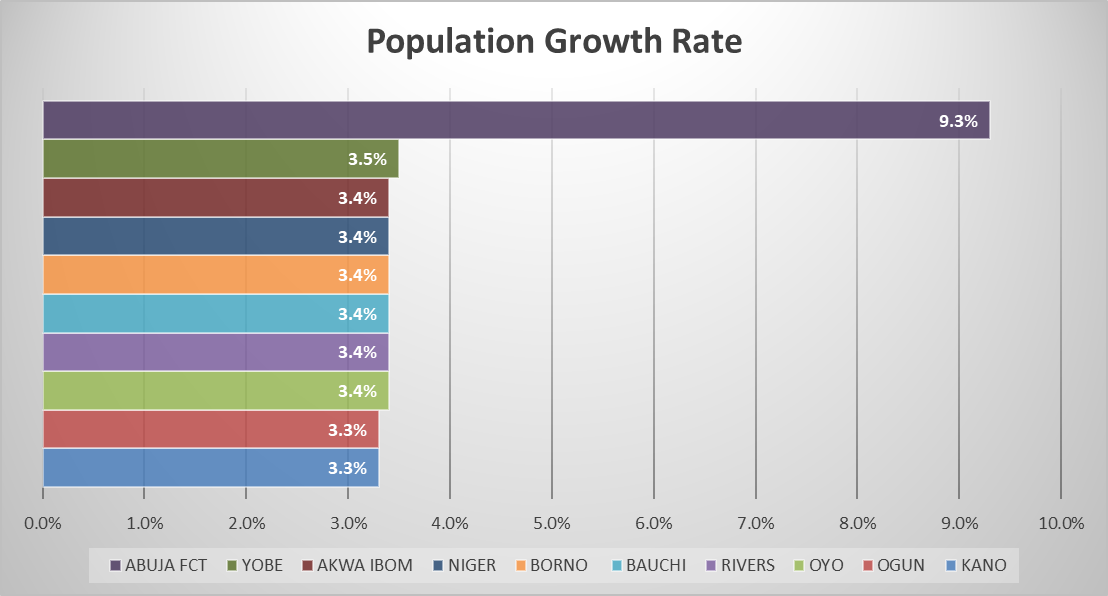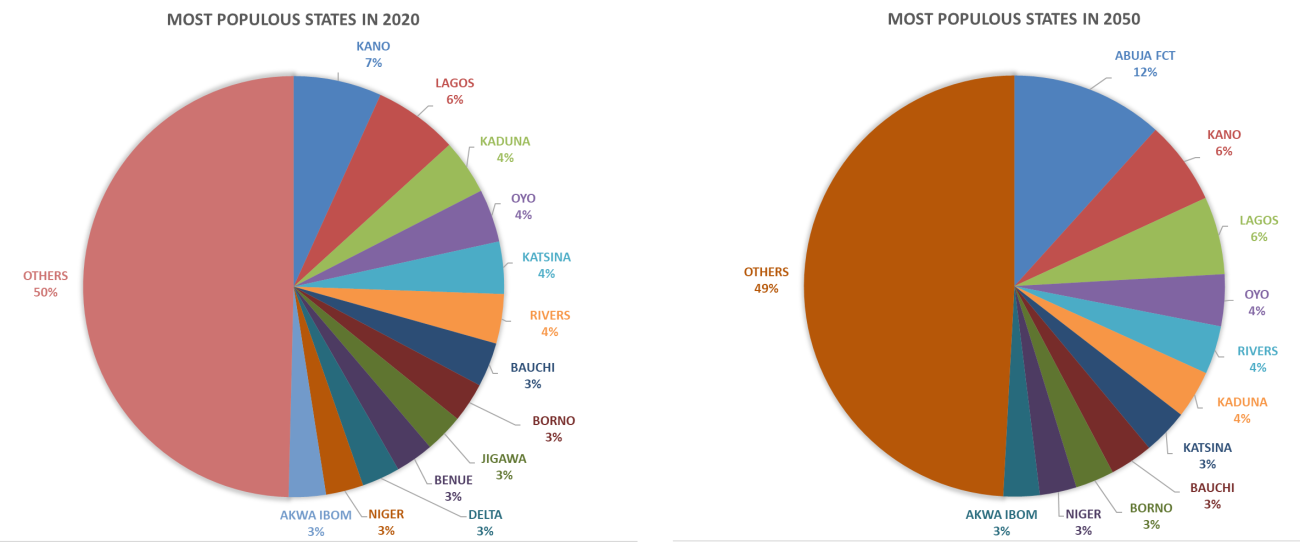
Nigeria's population is growing at over 3% per year.
As we begin another decade, we take a look at Sub-Saharan Africa’s population which is set to double over the next 30 years, adding a further 1 billion people and poised to take the lead from central and south Asia as the world’s most populous region.
The high fertility rates in the region will account for more than half of global population growth between now and 2050, according to projections from the UN Population Division. They also estimate that the region’s population will still be rising fast at the end of the century, when the number of people living in much of Asia and elsewhere will be in decline.
The trend is exemplified by Nigeria, whose population has already surged from 95 million in 1990 to 210 million in 2019. With Nigeria’s population growing at more than 3% a year, its population is set to more than double again to more than 600 million by 2050 (if we were using the sub regional growth figures released by Nigeria's National Bureau of Statistics, a lot more than the estimated 400 million given the UN), when it will have overtaken the US as the world’s third most inhabited country.
The major triggers for population increase include early marriages, high birth rates and lack of family planning access. But cultural and religious contributors are also impacting significantly. The average family size in Nigeria is 5.6 people, but many families are larger, especially in the north where polygamy is common.
The government is trying to encourage smaller family sizes in order to secure Nigeria’s financial future. But experts say until social structures like education and health are improved, the odds are that Nigeria’s population will continue to increase and may even surpass the 2050 projection.
At Kingmakers, using data acquired from the National Bureau of Statistics to look at the sub-regional populations (states and Federal Capital Territory) to gain further insights on what the local population might be in 2050.
The Emergence of Abuja, the new Maga City
Based on its current growth rate, The Federal Capital Territory is the fastest growing sub region in the country. With a growth rate of 9.3%, almost three times is nearest rival, Yobe (3.5%), if left unabated will see the country’s capital region boom by 2050 to become its most populated sub-region with 71 million residents.

The top ten fastest growing populations in Nigeria.
At the turn of the century, less than a million resided in the newly established hilly leafy suburbs of the political epicentre of Nigeria. However, by the end of this year, that population will swell to five times that number. By 2040, it will take over the leading spot from Kano in the population table, and within a decade almost double its population to cement its position.
This once quiet but well planned city is being rapidly transformed. Traffic jams, a regular and expected aspect of Nigeria's former capital city, Lagos has suddenly become a constant feature in Abuja, the nation's ultra-modern capital. Taillights of cars stuck in traffic lining streets as far as the eye can see are now a common sight in the city. Tales of hours spent in traffic by commuters on their way to and from work are now subjects of conversation in a city that once boasted about the ease of commuting.
These, along with the rise in the size and number of the various slums that align the city outskirts, provide fair warning to the city planners and authorities that much work still needs to be done to provide more infrastructure and facilities to handle the rapid growth.
The North surges ahead
Just a little over 50% of the population will reside in the Federal Capital Territory and 9 states. 7 of those sub regions will be in the northern part of the country. Compare that to 2020, where 13 of the states account for half of the population, and are evenly split between the North (7) and South (6).

The most populous states in Nigeria.
There are currently 10 million more people resident in the northern part of Nigeria as opposed to the south, by 2050, that gap will widen to 100 million.

The increasing population gap between Northern and Southern Nigeria.
This has both economic and security implications for the country. The northern part of the country is less developed than its southern counterpart, and with higher poverty rates. If that trend continues, the enormous stress a larger population will it put on limited resources is bound to further worsen the power keg situation in the region, already afflicted with Boko Haram and the Fulani herdsmen insurgence.
... and the South East loses out
In a nation where tribal affiliations still play a major role in national politics, the South East region, will see itself fall down the pecking order by 2050, when for the first time, its population will contribute less than 10% of the Nigerian population. It is the slowest growing region of the country at 2.9%, below the national average of 3.2%.

By 2050, the South East geopolitical zone will contribute less than 10% of the total population.
Youth Population to bypass half a billion
The Nigerian population is a youthful one, with roughly 80% of the population under the age of 40. With that in mind, the youthful population is projected to reach the 500 million mark by 2050. An increasing working-age population is a major opportunity for economic growth which could spur GDP growth by as much as a further 10% if properly harnessed. However, Nigeria ranks very poorly when in comes to human capital development. According to UN, Nigeria's Human Development Index value for 2018 is 0.534— which put the country in the low human development category— positioning it at 158 out of 189 countries and territories.

The population of Nigerians under the age of 40 is projected to hit half a billion by 2050.
Moreover, without jobs and economic opportunities, social stresses such as unemployment could lead to unrest. A 2014 UN report highlighted this risk. The authors write: “lack of meaningful work among young people is playing into frustration that has in some instances contributed to social unrest or unmanaged migration.”
Assumptions Made
We used the regional growth figures to project future growth as well as their summation to get the total population of the country. We did not take into account other factors that could affect population growth such as internal and external migration.